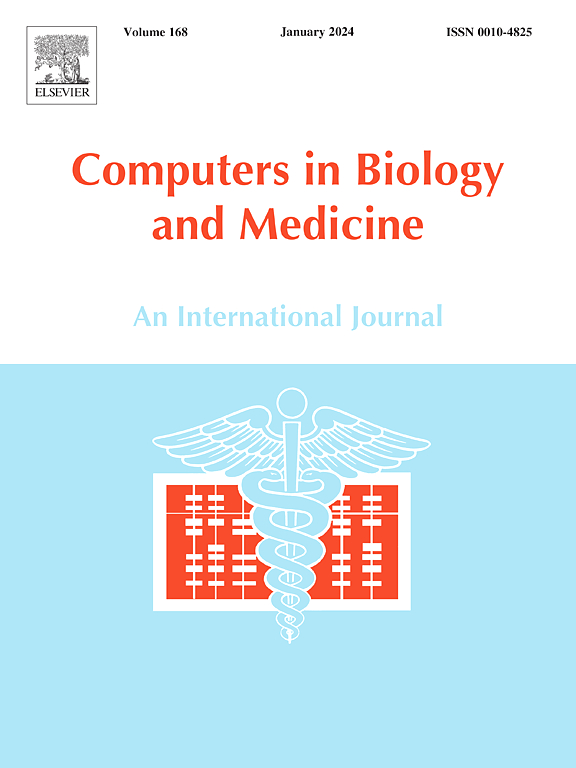脑分形维数和机器学习可以预测首发精神病和过渡到精神病的风险
IF 7
2区 医学
Q1 BIOLOGY
引用次数: 0
摘要
尽管在与精神疾病相关的大脑中存在显著的结构异常,但这些异常与临床表现的关系尚不清楚。然而,分形维数(FD)提供了大脑微观结构的复杂性和不规则性的细节,可能是一个有前途的特征,如帕金森氏症和阿尔茨海默氏症等神经精神疾病。当与机器学习相结合时,它可能为精神病的检测和预后提供可能的生物标志物。本研究的目的是探讨FD作为一种结构磁共振成像(sMRI)特征在临床高风险精神病患者中未过渡到精神病(CHR_NT)、临床高风险过渡到精神病(CHR_T)、首发精神病患者(FEP)和健康对照(HC)。使用机器学习方法最终对sMRI图像进行分类,目标是(a)评估FD作为潜在的生物标志物,(b)调查其预测随后从高风险临床状况过渡到精神病的能力。我们获得194名受试者的sMRI图像,包括44名HCs, 77名FEPs, 16名CHR_Ts和57名chr_nt。我们提取FD特征并使用机器学习方法在五种分类模式下进行分析(a) FEP vs. HC, (b) FEP vs. CHR_NT, (c) FEP vs. CHR_T, (d) CHR_NT vs. CHR_T, (d) CHR_NT vs. HC和(e) CHR_T vs. HC。此外,CHR_T组在(a)、(b)和(d)比较中被用作外部验证,以检查疾病的进展是否遵循FEP或CHR_NT模式。该算法的平衡精度大于0.77。这项研究表明,FD可以作为一种预测性神经影像学标志物,为精神病整个过程中引发的微观结构改变提供新的信息。FD在检测精神病和向精神病过渡方面的有效性应通过使用更大的数据集进一步研究来确定。本文章由计算机程序翻译,如有差异,请以英文原文为准。
Brain Fractal Dimension and Machine Learning can predict first-episode psychosis and risk for transition to psychosis
Although there are notable structural abnormalities in the brain associated with psychotic diseases, it is still unclear how these abnormalities relate to clinical presentation. However, the fractal dimension (FD), which offers details on the complexity and irregularity of brain microstructures, may be a promising feature, as demonstrated by neuropsychiatric disorders such as Parkinson’s and Alzheimer’s. It may offer a possible biomarker for the detection and prognosis of psychosis when paired with machine learning. The purpose of this study is to investigate FD as a structural magnetic resonance imaging (sMRI) feature from individuals with a high clinical risk of psychosis who did not transit to psychosis (CHR_NT), clinical high risk who transit to psychosis (CHR_T), patients with first-episode psychosis (FEP) and healthy controls (HC). Using a machine learning approach that ultimately classifies sMRI images, the goals are (a) to evaluate FD as a potential biomarker and (b) to investigate its ability to predict a subsequent transition to psychosis from the high-risk clinical condition. We obtained sMRI images from 194 subjects, including 44 HCs, 77 FEPs, 16 CHR_Ts, and 57 CHR_NTs. We extracted the FD features and analyzed them using machine learning methods under five classification schemas (a) FEP vs. HC, (b) FEP vs. CHR_NT, (c) FEP vs. CHR_T, (d) CHR_NT vs. CHR_T, (d) CHR_NT vs. HC and (e) CHR_T vs. HC. In addition, the CHR_T group was used as external validation in (a), (b) and (d) comparisons to examine whether the progression of the disorder followed the FEP or CHR_NT patterns. The proposed algorithm resulted in a balanced accuracy greater than 0.77. This study has shown that FD can function as a predictive neuroimaging marker, providing fresh information on the microstructural alterations triggered throughout the course of psychosis. The effectiveness of FD in the detection of psychosis and transition to psychosis should be established by further research using larger datasets.
求助全文
通过发布文献求助,成功后即可免费获取论文全文。
去求助
来源期刊

Computers in biology and medicine
工程技术-工程:生物医学
CiteScore
11.70
自引率
10.40%
发文量
1086
审稿时长
74 days
期刊介绍:
Computers in Biology and Medicine is an international forum for sharing groundbreaking advancements in the use of computers in bioscience and medicine. This journal serves as a medium for communicating essential research, instruction, ideas, and information regarding the rapidly evolving field of computer applications in these domains. By encouraging the exchange of knowledge, we aim to facilitate progress and innovation in the utilization of computers in biology and medicine.
 求助内容:
求助内容: 应助结果提醒方式:
应助结果提醒方式:


